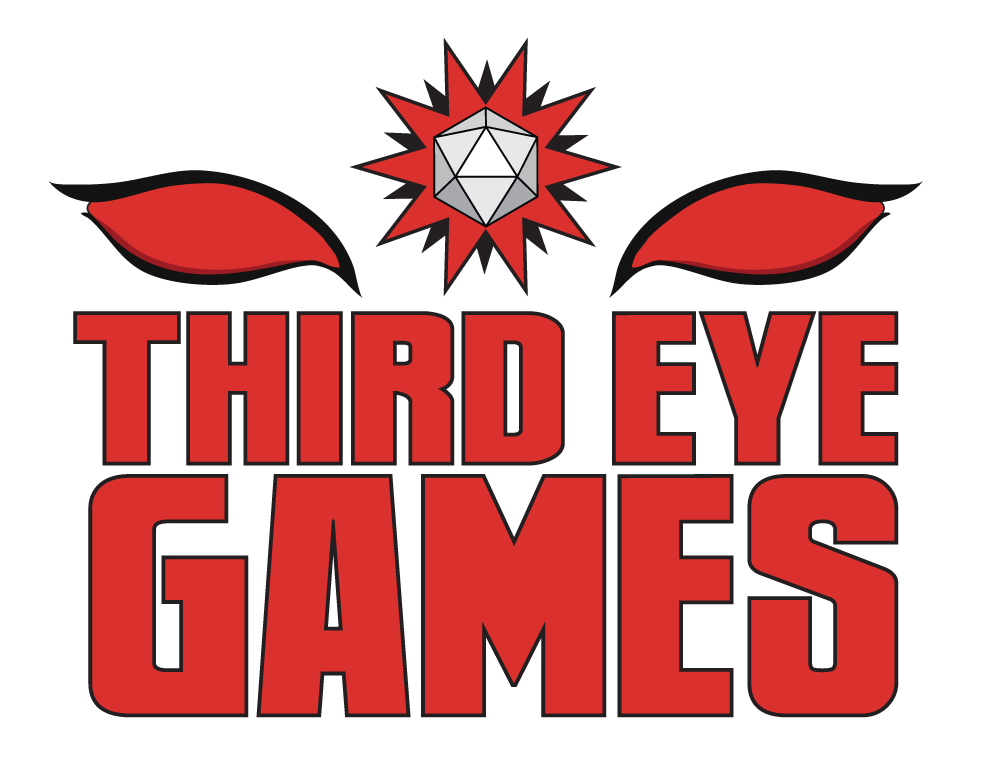How do I get my D&D friends to play an indie game?
It’s a tale as old as time… you’ve just picked up a new indie TTRPG from your local FLGS or convention, and you’re stoked to read it and give it a shot. On behalf of all indie publishers, we thank you for giving new tabletop roleplaying games a shot. That’s what keeps us going. Unfortunately, that also leads many groups to a very common question: “How do I get my D&D friends to play an indie game?” (Hence the title of this blog post.)
Let’s just get one thing straight: There’s no getting away from Dungeons & Dragons. It’s been the elephant in the room during every game since the first and is still the most popular, having launched books, comics, movies, and video games for decades. Sure, it had a rocky launch, but it has reached a level that seems untouchable.
Yet, there are hundreds of indie publishers and designers who give their hearts to creating something new, something distinctly separate from D&D. I’m one of these people, having brought several worlds to life, like that of AMP: Year One or Part-Time Gods, and launching many of my own RPG systems to innovate mechanics design, like the Charka System behind The Ninja Crusade or the Pip System made for beginners in the hobby. When I’m slinging my games and speaking with players, the question of how to get that new shiny game to the table is actually possible.
Let’s discuss a few possible strategies:
Have a Talk
It might sound simple, but the first thing to do is to just talk to your group. Make sure to sit everyone around the table and lead with “So, I bet you’re wondering why I summoned you here,” for extra oomph. Hahahaha!
But in all seriousness, the people you game with are your friends, right? Or at least someone who might want to see you happy? If that’s true, just approach them with a new game and let them know why you think it’s cool (you may want to prepare your pitch beforehand) and why you want to play with them. Most of the time, even if you think they won’t say yes, they’ll play along. All good social groups survive on good communication, so what games you play together should be breached in the same way. If you still get significant pushback, don’t fret; there are other things you can do.
Inspiration Night
To lay the groundwork before you have a talk with your group (see above), you can orchestrate time for the group to hang out and immerse everyone in the themes, moods, and genre of your new game. Even if your group plays D&D, most people who play TTRPGs are well-versed in other geekery. If you just grabbed Apocalypse Prevention, Inc., maybe have a Hellboy or Men in Black movie marathon. Introduce your friends to the amazing Basilisk anime just before pitching them The Ninja Crusade 2nd Edition as your next game.
This approach can increase your odds of getting a “yes.” It also eases the complexity of the pitch you need to give to the group. Instead, you can point to the screen and say, “Wouldn’t that be cool as a game?” When your friends inevitably agree, you can jump to the rescue to deliver what they just said they wanted. Everyone’s a winner!
Be Willing to do the Heavy Lifting
Sometimes, apprehension to try new games can be a product of a fear of change or a reluctance to learn something new. Once a gamer has spent time honing their knowledge of an RPG system, it’s hard to take in new information sometimes. That said, if you have a game that you want to pitch to your existing D&D group, then it may be incumbent on you to make the barrier of entry as low as possible.
First off, it might necessitate you running the game. Even if you’re used to being a player, taking on the role of Game Master can be the quickest way to get a new game to your table. You own the book, so make sure you read through it to understand the rules in a way that can be easily explained to the group. Make some pregenerated characters for your players if they don’t want to learn new creation rules. If they enjoy the game, then they can always make their own after the fact. In the end, if the player doesn’t need to read a whole book and only needs to engage with the system as much as necessary to play for a session or session, then that can be an easy way to get an enthusiastic yes to trying something new out.
Start a New Group
It might sound like an anathema to find new people to play a game with, but it’s definitely an option. Do you know why? You’re not alone in asking this question. There are tons of gamers out there trying to get indie games, maybe even the same game you want to play, to their table or players who are open to playing anything. Not everyone feels tied to a single game or RPG system, you know? If it’s difficult to find people in your area, there are also virtual sessions where you can play games with people from all over the world. Don’t limit yourself to the same group you’ve always played with, especially if they aren’t willing to try new things.
There are thousands of TTRPGs on the market, with even more coming. Indie games aren’t going to stop innovating and pushing the hobby forward. And while D&D is a great game that millions of people play, it’s not the only thing out there. Give some other tabletop roleplaying games a chance, and you might find your new favorite game!
